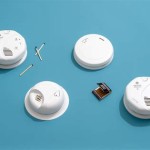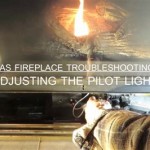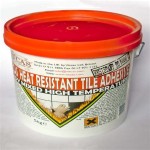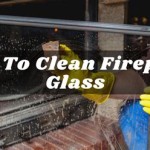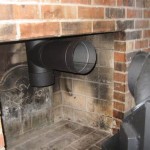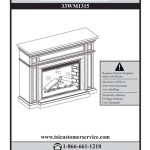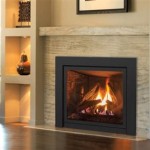Baby Proofing Fireplace Doors: A Comprehensive Guide
Fireplaces, while providing warmth and ambiance, present a significant safety hazard to young children. Their inherent design, with hot surfaces and potential access points, necessitates meticulous baby proofing measures. Fireplace doors, intended to contain sparks and embers, are often inadequate as a standalone safety barrier. This article delves into the various aspects of effectively baby proofing fireplace doors, mitigating the risks posed to infants and toddlers.
The appeal of a fireplace to a young child is multifaceted. The flickering flames, the texture of the bricks or stone surround, and the overall novelty of the structure can draw them in. Babies and toddlers explore their environment through touch, making the hot surface of the fireplace a potential source of severe burns. Furthermore, even when cool to the touch, the door latch mechanisms may be easily manipulated by a determined child, leading to access to the firebox itself, containing ash, soot, and potentially leftover embers. Parents and caregivers must therefore adopt a multi-layered approach to ensure the safety of their children around fireplaces.
Understanding the Risks Associated with Fireplace Doors
The primary risk associated with fireplace doors is, undoubtedly, burns. The metal surfaces of the doors can become extremely hot during and after a fire, causing instant and significant burns upon contact. Children's skin is much more sensitive than adult skin, making them more susceptible to severe injury. Even a brief touch can result in a painful and lasting scar. The temperature of the doors lingers long after the fire has extinguished, posing a delayed hazard that is often overlooked.
Beyond the immediate burn risk, fireplace doors can also present pinching hazards. The hinges and latch mechanisms of the doors can trap small fingers. While less severe than burns, these injuries can still be painful and distressing for the child. Constant opening and closing of the fireplace doors can also create a temptation for children to swing on them, potentially dislodging the doors or causing them to fall, leading to further injuries.
Finally, the firebox itself, accessible when the doors are open, contains a variety of hazards. Ash and soot are irritants that can cause respiratory problems if inhaled and skin irritation upon contact. Embers, even seemingly extinguished ones, can reignite and cause burns. Small objects left inside the firebox can also pose choking hazards. The interior of the firebox can also be dark and enclosed, potentially causing fear and anxiety in a young child who might venture inside.
Securing the Fireplace Door Itself
The initial step in baby proofing fireplace doors is to ensure the door itself is securely fastened and difficult for a child to open. Many fireplace doors have simple latch mechanisms that are easily defeated by a determined toddler. Replacing these latches with more robust and child-resistant options is a crucial preventative measure. Magnetic latches, requiring significant force to open, or multi-point locking systems, requiring coordinated actions, are effective alternatives.
Consider the overall integrity of the fireplace door. Are the hinges sturdy and well-maintained? Loose or damaged hinges can allow the door to sag or become easily dislodged. Regularly inspect the hinges and tighten any loose screws. Replace worn or damaged hinges to ensure the door remains securely attached to the fireplace frame. Consider welding the hinges if the existing hinges are inadequate and easily manipulated.
For older fireplace doors with simpler designs, additional safety measures may be necessary. Installing multiple childproof latches along the length of the door can significantly increase the difficulty of opening it. These latches should be strategically placed out of reach of the child, or require a specific tool or key to operate. Ensure the chosen latches are heat-resistant and can withstand the high temperatures generated by the fireplace.
Creating a Physical Barrier Around the Fireplace
Regardless of the security of the fireplace door itself, creating a physical barrier around the fireplace is highly recommended. This creates a safe zone, preventing children from getting close enough to touch the hot surfaces or attempt to open the doors. Several options exist for creating such a barrier, each with its own advantages and disadvantages.
A fireplace safety gate is specifically designed for this purpose. These gates are typically made of metal and are sturdy enough to withstand the pressure of a child leaning against them. They are typically adjustable to fit a variety of fireplace sizes and shapes, and can be easily installed and removed as needed. Look for gates that are JPMA certified, indicating that they meet or exceed safety standards.
Alternatively, a playard or playpen can be used to create a larger, more enclosed barrier around the fireplace. This provides ample space for the child to play safely while keeping them a safe distance from the fireplace. The playard should be sturdy and have a locking mechanism to prevent the child from escaping. Ensure the playard is placed far enough away from the fireplace to prevent the child from reaching the door or surround.
Custom-built barriers offer the most aesthetically pleasing and personalized safety solution. These barriers can be designed to complement the existing décor of the room and provide a seamless integration. However, custom-built barriers can be more expensive and require professional installation. Ensure the barrier is constructed from heat-resistant materials and is securely attached to the floor or wall.
Reinforcing Safety Through Education and Prevention
While physical barriers and secure latches are essential, educating children about the dangers of the fireplace is equally important. Even young children can understand the concept of "hot" and "dangerous" with consistent and repeated explanations. Use simple language and demonstrate the potential consequences of touching the fireplace, such as pointing to a hot stove or oven and explaining that the fireplace is equally hot.
Never leave a child unattended near a fireplace, even if it is not in use. Curiosity can lead a child to investigate the fireplace, potentially getting themselves into a dangerous situation. Constant supervision is the most effective way to prevent accidents around the fireplace. Encourage older children to act as role models, demonstrating safe behavior around the fireplace and reminding younger siblings of the dangers.
Regularly inspect the fireplace and surrounding area for potential hazards. Ensure there are no loose bricks or stones that could be dislodged by a child. Keep the area around the fireplace clear of toys, furniture, and other objects that could be used to climb on or access the fireplace. Implement a strict safety checklist to ensure all safety measures are in place and functioning effectively. Consider installing a temperature sensor on the fireplace door to provide a clear indication of when the surface is hot.

3 Ways To Baby Proof A Fireplace Wikihow

How To Baby Proof Fireplace Important Checklist

Babyproof Your Hearth And Fireplace With These Simple Tips Tricks

Mesh Fireplace Cover Baby Proof To Prevent And Pet 29 40in Com

Fireplace Child Pet Protection Firescreen Babyproof Co Za

Farmhouse Fireplace Baby Gate Childproof Proof

How To Babyproof A Fireplace Guards Gates Doors Pads

Mesh Fireplace Cover Baby Proof To Prevent And Pet 29 40in Com

Wood Stove Gas Hearth Gate G3111g4301 G4311 Friendly Fires

How To Baby Proof Your Fireplace Reviewed
Related Posts

